“When do you play the last land in your hand?” I have the good fortune of working alongside several other Magic players, and this was the conversation topic over lunch yesterday. Do you hold that land and represent something, or play it? There was a lot of back and forth about the topic, and I’d like to share my addition to the conversation.
This is a deckbuilding question, not a game question.
You plan how to sequence your lands while you’re building your deck. Sure, there’s still a case-by-case basis depending on the game state, but you can craft a pretty accurate guide for playing lands when you’re building it. At that point, you have perfect information about what will be (or could be) in your deck and can build it with a streamlined plan for playing out its lands.
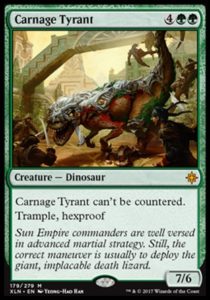
How high is your curve?
This is a simple question, and one you already tackle when considering how many lands to play. You need to hit land drops up to your most expensive card in order to be able to cast every spell in your deck. If you have a six drop, you’re rewarded for every land drop up to six. If you sandbag a few lands before hitting your sixth, you delay your ability to deploy your six drop, which is awful. If you sandbag after hitting the peak of your curve, you’re not penalized.
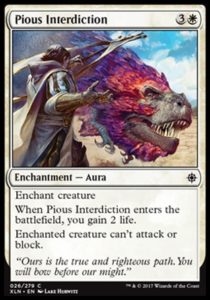
What is the maximum amount of mana you can spend in a turn?
If you have a lot of mid-to-high cost cards (such as removal spells), you are rewarded for playing out your lands. Say you’re flooding out and have a Pious Interdiction you’re saving. Your opponent overextends and you draw another Pious Interdiction. If you’ve been playing out your lands, you’re able to pacify both of her blockers and swing for the win. If you’ve been sandbagging, this line is unavailable.
When you’ve got cards you are encouraged to sandbag like solid removal spells, you’re rewarded for not holding onto your lands.
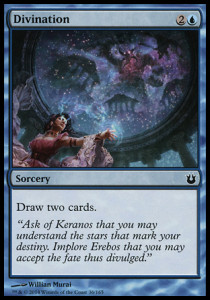
Card advantage rewards mana advantage.
Card draw increases the maximum amount of mana you can spend in a turn. If you cast Pirate’s Prize and draw two spells, you’ll probably want to cast them, too. You’re most likely to be able to do that if you’ve been hitting your land drops.
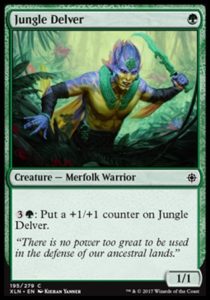
Mana sinks are mana hungry.
Any cards which can utilize a boundless amount of mana strongly encourage you to deploy every last land. Say you’ve got eight lands in play, a land in hand, and draw Jungle Delver. You should probably play that land so you can pump it twice. Sure, you can’t represent anything, but you lose the real value of activating your creature (and waste three mana you could have otherwise utilized).
Suppose you’ve been sandbagging lands and have two in hand and seven in play when you draw your Jungle Delver. You lose an entire activation of the card. The next turn, you lose the ability to cast a one-drop and activate Delver. The following turn, you can’t play a two-drop and activate it twice, and so on. Mana sinks reward you for playing every last land.
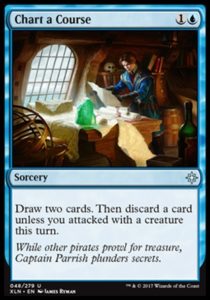
Sometimes, lands have other uses.
Cards like [casthaven]Merfolk Looter[/casthaven], Rummaging Goblin, and [casthaven]Cathartic Reunion[/casthaven] turn excess lands into new cards, which rewards holding onto excess lands. If you have these in your deck, think long and hard about factors that encourage you to deploy lands—Rummaging Goblin and Ancient Brontodon play poorly together.
That said, these kinds of cards affect your play pattern, but not necessarily your land counts. If you play extra lands and card filtering, you’re less likely to be mana light in the early game and mana flooded in the late game. If you’ve got looters and rummagers, you want to know precisely when you should stop playing lands to maximize your ability to use them.
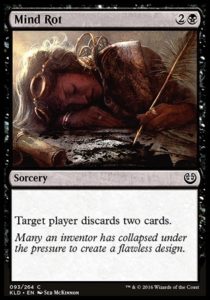
Format factors.
Discard effects are more powerful or common in some formats than others. If discard is commonly maindecked, or it’s post-sideboard and you know your opponent has it, you are rewarded for two very different play patterns:
- If you’ve got a lot of cards in hand and a decent amount of lands, hold onto your lands. This minimizes your opponent’s ability to make you discard nonland cards.
- If you’ve got few cards in hand and any expensive cards or mana sinks, play out all of your lands. This prevents your opponent from ever getting two (or even any) cards with their discard spell.
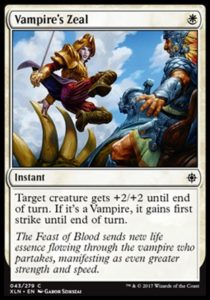
Representing something.
Players commonly overestimate the effectiveness of representing a spell like a combat trick. Usually, the best way to deal with a combat trick is to force its use immediately in the early game (since later on, the trick is likely to take out a more valuable creature) or wait until you can respond with a spell of your own and two-for-one your opponent. If you bluff or have the trick, you’ll probably be called pretty quickly. If you sandbag a bunch of lands, effectively doing nothing over time, it doesn’t take a genius to figure out you’ve mostly got nothing (even if one of the cards in your hand isn’t a land).
Moreover, representing a card is potential value. Your opponent needs to both recognize what you’re doing and play in a way that benefits you. Your ability to benefit is contingent on multiple factors which are outside of your control. Contrast this with everything previously listed—in all of those cases, you may gain value based on factors that are entirely under your control.
I’m not saying don’t represent a trick. That’s all you can do when you’re dead on board and hoping your opponent doesn’t swing for lethal for fear of something. However, representing a trick should be a tertiary concern when you’re pondering whether to deploy that land or not. There are a host of other factors at hand, and if you’ve built your deck thoughtfully, you probably know the right answer before getting all the way down the checklist to representing something.
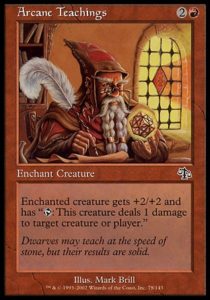
That’s all for today, friends. Hope you’ve enjoyed this delve into a frequent, but often unquestioned line of play. And, as always, thanks for reading!
—Zachary Barash
Zachary Barash is a New York City-based game designer. He works for Kingdom Death: Monster, has an MFA in Game Design from NYU, and does freelance game design.
His favorite card of the month is [casthaven]Moment of Heroism[/casthaven]. This unassuming little pump spell looks lackluster (after all, we get +2/+2 combat tricks with upside for W these days), but it can lead to complete blowouts in combat, where you kill a creature and gain 3-5 life for only two mana. It was particularly good in Innistrad, where instant-speed removal was weak and the (second) best deck in the format was an aggro deck overloaded on two drops. Sometimes, you just cast it to gain 5 life and flip the race on your opponent. It’s a delightfully simple card that beginners can understand, but it has powerful enough upside that skilled players can seek to maximize its effectiveness (while also siding it out when it’s irrelevant). That’s a whole lot to pack into a common combat trick with only two lines of text.

